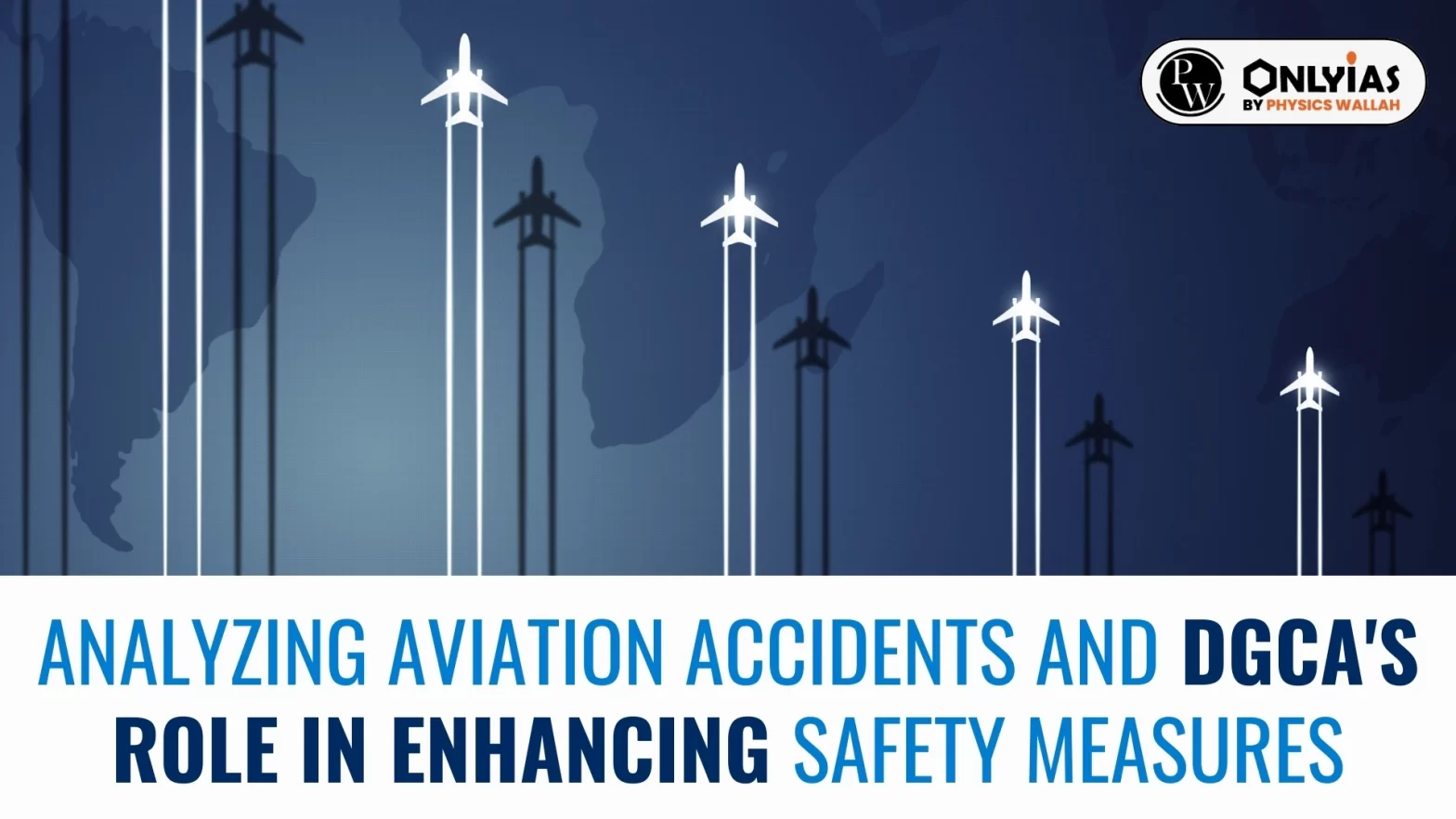Context: Recently, an aviation accident happened at Tokyo’s Haneda airport, where a Japan Airlines (JAL) Airbus A350 aircraft collided with a Japanese Coast Guard Bombardier Dash 8 aircraft, in which all 379 passengers on the JAL plane escaped but with five fatalities on the smaller aircraft.
| Relevancy for Prelims: The Directorate General of Civil Aviation (DGCA), and RCS UDAN: Transforming Air Connectivity.
Relevancy for Mains: Measures required for Safety and Accountability measures in the Indian aviation Industry. |
Lessons for DGCA from Recent Aviation Accidents
- Discipline: It exemplified the highest quality of discipline and crew training, which saved 379 people in the fiery accident.
- Safety-Centric Behavior: All passengers followed the safety instructions and left the aircraft without carrying their handbags or crowding around after coming down the aircraft evacuation slides.
- Good Presence of Mind: While the cabin public address system was not working, the crew used a megaphone and voice announcements for the evacuation.
- Orderly Evacuation: It was an amazing display of orderly evacuation.
Prioritizing Safety: Key Focus Areas for DGCA
- Remember Safety First: Passengers need to evacuate safely rather than focusing more on their luggage.
- Air passengers should also realize that pre-flight emergency procedure instructions should be followed seriously.
- To meet up with Professional Standards: The aviation world should learn a lot from the absolutely high professional standards in JAL’s training of its crew.
- Ensuring Transparency: The Japanese authorities have already made the ATC transcripts public. Contrast this with what would have been several months of silence and secrecy in India.
- Quality Demonstration: Aircraft manufacturers are required to demonstrate that an aircraft, in maximum density configuration, can be completely evacuated within 90 seconds using only half the total number of emergency exits.
- Pro-active Working: The Air India management needs to act proactively on a report by the instructor who trained the captain.
- Analysis and Remember: The DGCA and Air India should look at the accidents caused by the confusion of flying different types of aircraft, especially when fatigue and stress are involved.
- Flight License for Pilots: The pilots had endorsements on their licenses to fly the Boeing and the Airbus and the switch positions for certain functions worked differently. Now, pilots need to fly the aircraft, prioritizing proficiency and experience over seniority.
- Quick Action on Investigation in associated cases.
- Implementation of stringent safety reporting and accountability measures
- Regular and enhanced crew training and adherence to safety procedures
- Evaluate crew selection criteria for new aircraft types, prioritizing proficiency and experience over seniority.
The Directorate General of Civil Aviation (DGCA)
- DGCA is a statutory body of the Government of India to regulate civil aviation in India. It became a statutory body under the Aircraft Act, 2020.
|
Must Read: GPS Spoofing And Jamming: Security Threats In Aviation
![]() 8 Jan 2024
8 Jan 2024

